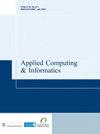利用机器学习算法对摩洛哥Ourika流域洪水易感区进行空间预测
IF 4.9
Q1 COMPUTER SCIENCE, INFORMATION SYSTEMS
引用次数: 1
摘要
目的本文的目的是预测摩洛哥高阿特拉斯Ourika流域易受洪水影响地区的地图绘制,目的是提供一个有用的工具,能够帮助相关地区以及整个摩洛哥缓解和管理洪水。设计/方法/方法采用四种机器学习算法进行建模,包括k近邻(KNN)、人工神经网络、随机森林(RF)和x梯度提升(XGB)。此外,将分为分类变量和数字变量的16个预测因子用作建模的输入。结果表明,RF和XGB是性能最好的算法,AUC得分分别为99.1%和99.2%。相反,KNN的预测能力最低,得分为94.4%。总体而言,算法预测超过60%的流域属于极低洪水风险等级,而高洪水风险等级占该地区的比例不到15%。独创性/价值在该地区使用人工智能工具(包括ML)进行洪水预测建模的研究有限,甚至不存在,这使得这项研究很有趣。本文章由计算机程序翻译,如有差异,请以英文原文为准。
Spatial prediction of flood-susceptible zones in the Ourika watershed of Morocco using machine learning algorithms
PurposeThe purpose of the paper is to predict mapping of areas vulnerable to flooding in the Ourika watershed in the High Atlas of Morocco with the aim of providing a useful tool capable of helping in the mitigation and management of floods in the associated region, as well as Morocco as a whole.Design/methodology/approachFour machine learning (ML) algorithms including k-nearest neighbors (KNN), artificial neural network, random forest (RF) and x-gradient boost (XGB) are adopted for modeling. Additionally, 16 predictors divided into categorical and numerical variables are used as inputs for modeling.FindingsThe results showed that RF and XGB were the best performing algorithms, with AUC scores of 99.1 and 99.2%, respectively. Conversely, KNN had the lowest predictive power, scoring 94.4%. Overall, the algorithms predicted that over 60% of the watershed was in the very low flood risk class, while the high flood risk class accounted for less than 15% of the area.Originality/valueThere are limited, if not non-existent studies on modeling using AI tools including ML in the region in predictive modeling of flooding, making this study intriguing.
求助全文
通过发布文献求助,成功后即可免费获取论文全文。
去求助
来源期刊

Applied Computing and Informatics
Computer Science-Information Systems
CiteScore
12.20
自引率
0.00%
发文量
0
审稿时长
39 weeks
期刊介绍:
Applied Computing and Informatics aims to be timely in disseminating leading-edge knowledge to researchers, practitioners and academics whose interest is in the latest developments in applied computing and information systems concepts, strategies, practices, tools and technologies. In particular, the journal encourages research studies that have significant contributions to make to the continuous development and improvement of IT practices in the Kingdom of Saudi Arabia and other countries. By doing so, the journal attempts to bridge the gap between the academic and industrial community, and therefore, welcomes theoretically grounded, methodologically sound research studies that address various IT-related problems and innovations of an applied nature. The journal will serve as a forum for practitioners, researchers, managers and IT policy makers to share their knowledge and experience in the design, development, implementation, management and evaluation of various IT applications. Contributions may deal with, but are not limited to: • Internet and E-Commerce Architecture, Infrastructure, Models, Deployment Strategies and Methodologies. • E-Business and E-Government Adoption. • Mobile Commerce and their Applications. • Applied Telecommunication Networks. • Software Engineering Approaches, Methodologies, Techniques, and Tools. • Applied Data Mining and Warehousing. • Information Strategic Planning and Recourse Management. • Applied Wireless Computing. • Enterprise Resource Planning Systems. • IT Education. • Societal, Cultural, and Ethical Issues of IT. • Policy, Legal and Global Issues of IT. • Enterprise Database Technology.
 求助内容:
求助内容: 应助结果提醒方式:
应助结果提醒方式:


